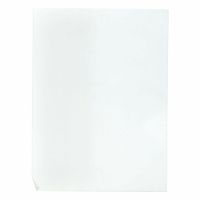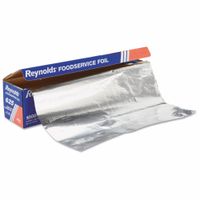Call +(254) 703 030 000 / 751 483 999 / 721 704 777
- Home
- Furnishings Appliances Hospitality
- Breakroom Food Service Disposables
- Disposable Food Wrap Dispensers Safety Labeling
Frequently Asked Questions
What are the best types of disposable food wraps for keeping food fresh?
The best types of disposable food wraps for keeping food fresh include:
1. **Plastic Wrap (Cling Film):** Made from polyvinyl chloride (PVC) or low-density polyethylene (LDPE), plastic wrap is highly effective at sealing food items due to its clingy nature. It prevents air and moisture from entering, thus maintaining freshness. It's ideal for wrapping sandwiches, covering bowls, and storing leftovers.
2. **Aluminum Foil:** Known for its excellent barrier properties, aluminum foil is perfect for wrapping foods that need protection from light, oxygen, and moisture. It's particularly useful for baking, grilling, and storing foods with strong odors, as it prevents flavor transfer.
3. **Wax Paper:** Coated with a thin layer of wax, this wrap is moisture-resistant and non-stick, making it suitable for wrapping sandwiches and baked goods. However, it is not airtight, so it's best for short-term storage.
4. **Parchment Paper:** Often used in baking, parchment paper is heat-resistant and non-stick. While not airtight, it is useful for wrapping foods that will be cooked or reheated, as it can withstand high temperatures.
5. **Beeswax Wraps:** An eco-friendly alternative, beeswax wraps are made from cotton fabric coated with beeswax, jojoba oil, and tree resin. They are reusable and moldable, providing a breathable seal that keeps food fresh while reducing plastic waste.
6. **Cellophane Wrap:** Made from cellulose, cellophane is biodegradable and provides a good barrier to air, oils, and bacteria. It's suitable for wrapping dry foods and candies.
Each type of wrap has its specific use case, and the choice depends on the food type, storage duration, and environmental considerations.
How do food safety labels help in identifying allergens and use-by dates?
Food safety labels play a crucial role in identifying allergens and use-by dates, ensuring consumer safety and informed choices.
Allergen identification on food labels is mandated by regulations in many countries. Labels must clearly list common allergens such as peanuts, tree nuts, milk, eggs, fish, shellfish, soy, and wheat. This information is typically found in the ingredients list or in a separate "Contains" statement. By highlighting these allergens, labels help individuals with food allergies avoid potentially life-threatening reactions.
Use-by dates are another critical component of food safety labels. These dates indicate the last day a product is considered safe to consume. They are particularly important for perishable items like dairy, meat, and ready-to-eat meals. Consuming products past their use-by date can pose health risks due to bacterial growth. Labels with clear use-by dates help consumers manage their food inventory, reducing waste and ensuring safety.
In summary, food safety labels provide essential information on allergens and use-by dates, helping consumers make safe and informed food choices.
What is the difference between wax paper and parchment paper for baking?
Wax paper and parchment paper are both used in the kitchen, but they have distinct differences, especially when it comes to baking.
Wax paper is coated with a thin layer of wax, usually paraffin, on both sides. This makes it non-stick and moisture-resistant, ideal for tasks like rolling out dough, wrapping food for storage, or lining countertops to prevent messes. However, wax paper is not heat-resistant. When exposed to high temperatures, the wax can melt, and the paper can catch fire, making it unsuitable for baking in the oven.
Parchment paper, on the other hand, is coated with silicone, making it both non-stick and heat-resistant. It can withstand oven temperatures up to about 420°F (215°C), depending on the brand. This makes parchment paper ideal for lining baking sheets and cake pans, as it prevents sticking and promotes even cooking without the risk of burning. It is also used for techniques like en papillote, where food is cooked in a paper pouch.
In summary, the main differences lie in their coatings and heat resistance. Wax paper is coated with wax and is not suitable for oven use, while parchment paper is coated with silicone and can be safely used in the oven.
How do date coders work in printing information on food labels?
Date coders, also known as date marking machines, are used in the food industry to print essential information such as expiration dates, manufacturing dates, and batch numbers on food labels. These machines ensure compliance with regulatory standards and help consumers make informed decisions.
There are several types of date coders, including:
1. **Inkjet Printers**: These are non-contact printers that use droplets of ink to mark the packaging. They are versatile and can print on various surfaces, including paper, plastic, and metal. Inkjet printers are suitable for high-speed production lines and can print variable data like dates and batch numbers.
2. **Laser Coders**: These use laser beams to etch information onto the packaging. They are ideal for permanent marking and work well on materials like glass, metal, and certain plastics. Laser coders are precise and require minimal maintenance, making them cost-effective over time.
3. **Thermal Transfer Overprinters (TTO)**: These use heat to transfer ink from a ribbon onto the packaging material. TTO is commonly used for flexible packaging and can produce high-resolution prints. They are suitable for printing barcodes, logos, and variable data.
4. **Hot Stamp Coders**: These use heat and pressure to transfer a colored foil onto the packaging. They are typically used for simple date coding and are suitable for low to medium-speed production lines.
5. **Dot Matrix Printers**: These create characters using a series of dots. They are less common but can be used for basic coding needs.
Date coders are integrated into production lines and can be programmed to automatically update the printed information. They ensure accuracy and consistency, which is crucial for traceability and quality control in the food industry.
What are the benefits of using disposable food service bags?
Disposable food service bags offer several benefits that make them a popular choice in the food industry. Firstly, they provide convenience and efficiency, as they are ready to use and eliminate the need for cleaning and maintenance, saving time and labor costs. They are also lightweight and easy to store, which is advantageous for businesses with limited space.
Hygiene is another significant benefit. Disposable bags reduce the risk of cross-contamination and foodborne illnesses, as they are used once and then discarded, ensuring that each customer receives a fresh, uncontaminated product. This is particularly important in environments where food safety is a priority.
Cost-effectiveness is also a key advantage. While the initial cost of disposable bags may seem higher than reusable options, the savings on cleaning supplies, labor, and potential health-related liabilities can make them more economical in the long run.
In terms of versatility, disposable food service bags come in various sizes, materials, and designs, catering to different food types and business needs. They can be used for hot or cold items, liquids, or solids, and are often designed to preserve the freshness and quality of the food.
Environmental considerations are increasingly important, and many disposable bags are now made from biodegradable or recyclable materials, reducing their environmental impact. This aligns with consumer demand for sustainable practices and can enhance a business's reputation.
Finally, disposable bags offer branding opportunities. They can be customized with logos and designs, serving as a marketing tool that promotes brand recognition and customer loyalty.
Overall, disposable food service bags provide a practical, hygienic, and cost-effective solution for food service operations, while also offering opportunities for branding and sustainability.
How can I organize sheets or rolls of food wraps efficiently?
To efficiently organize sheets or rolls of food wraps, follow these steps:
1. **Categorize by Type**: Separate wraps into categories such as aluminum foil, plastic wrap, parchment paper, and wax paper. This helps in quickly locating the type you need.
2. **Use a Dedicated Drawer or Shelf**: Allocate a specific drawer or shelf in your kitchen for storing wraps. Ensure it's easily accessible and near your food preparation area.
3. **Vertical Storage**: Store rolls vertically in a deep drawer or a tall container. This saves space and makes it easier to see and grab the roll you need.
4. **Use a Dispenser**: Invest in a multi-roll dispenser that can hold several types of wraps. These often come with built-in cutters, making it easy to dispense and cut the wrap.
5. **Labeling**: Clearly label each roll or its storage container. This is especially useful if you have similar-looking wraps like wax paper and parchment paper.
6. **Drawer Dividers**: Use adjustable drawer dividers to keep rolls from rolling around. This keeps them organized and prevents damage.
7. **Wall or Cabinet Door Rack**: Install a rack on the inside of a cabinet door or on the wall. This keeps wraps off the counter and within easy reach.
8. **Repurpose Magazine Holders**: Use magazine holders to store rolls upright. This is a cost-effective and space-saving solution.
9. **Consolidate Partially Used Rolls**: Combine partially used rolls of the same type to reduce clutter.
10. **Regularly Declutter**: Periodically check your stock and discard any damaged or expired wraps to maintain an organized space.
By implementing these strategies, you can maintain an efficient and tidy storage system for your food wraps.
What are the environmental impacts of using disposable food wraps and bags?
Disposable food wraps and bags, typically made from plastic, aluminum, or paper, have significant environmental impacts.
Plastic wraps and bags are derived from non-renewable fossil fuels, contributing to resource depletion. Their production emits greenhouse gases, exacerbating climate change. Once discarded, they often end up in landfills or the environment due to inadequate waste management. In landfills, they can take hundreds of years to decompose, releasing methane, a potent greenhouse gas. In the environment, they contribute to pollution, harming wildlife that may ingest or become entangled in plastic debris. Microplastics, resulting from the breakdown of larger plastic items, contaminate soil and water, entering the food chain and potentially affecting human health.
Aluminum foil, while recyclable, requires significant energy to produce, leading to high carbon emissions. If not recycled, it contributes to landfill waste. The mining of bauxite, the raw material for aluminum, causes deforestation, habitat destruction, and soil erosion, impacting biodiversity.
Paper wraps and bags, though biodegradable, also have environmental costs. The paper industry is a major contributor to deforestation, which reduces biodiversity and carbon sequestration capacity. Paper production is water-intensive and can lead to water pollution due to the release of chemicals used in processing. Although paper decomposes faster than plastic, its production and disposal still contribute to environmental degradation.
Overall, the use of disposable food wraps and bags leads to resource depletion, pollution, and biodiversity loss, highlighting the need for sustainable alternatives and improved waste management practices.


